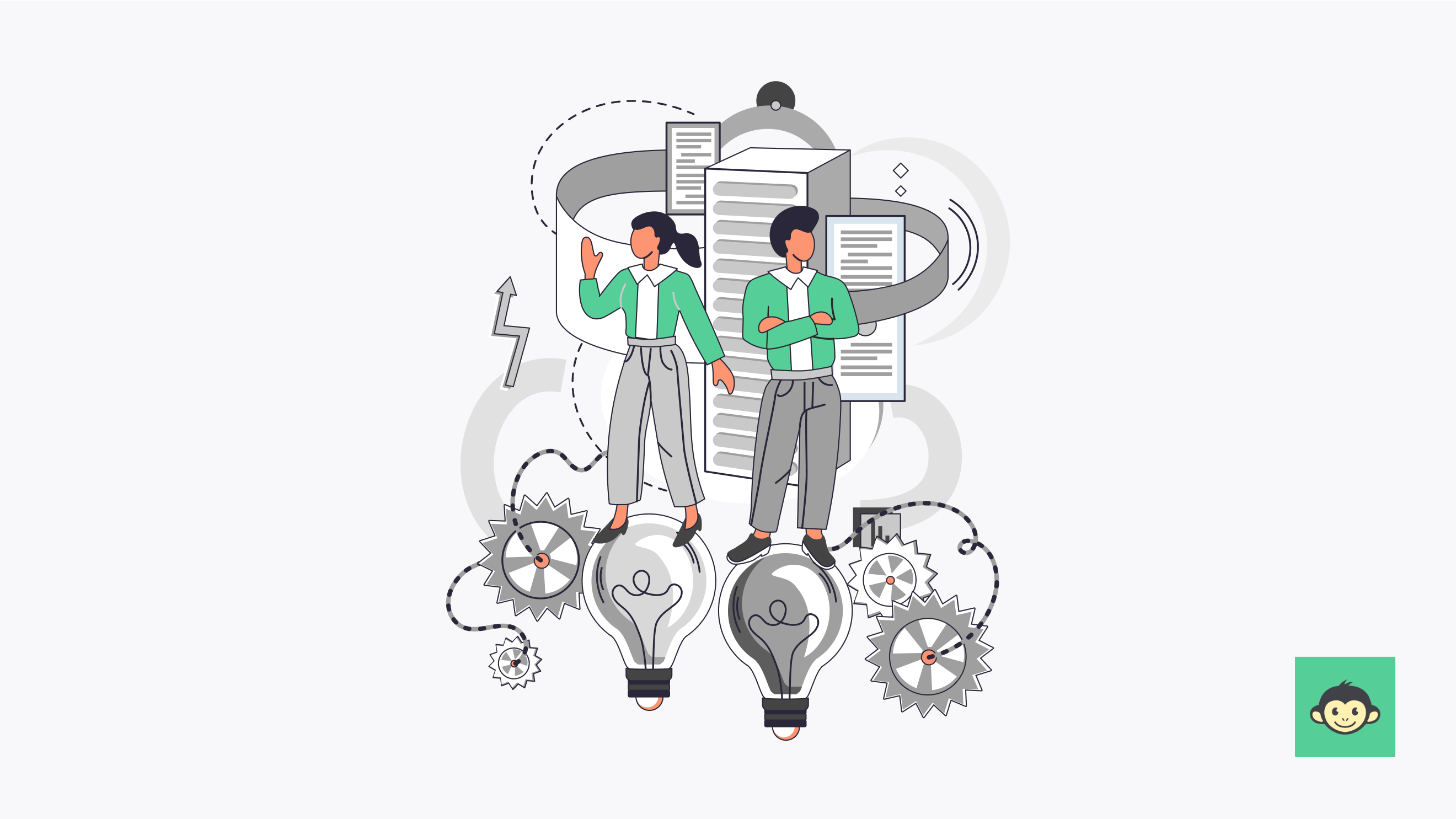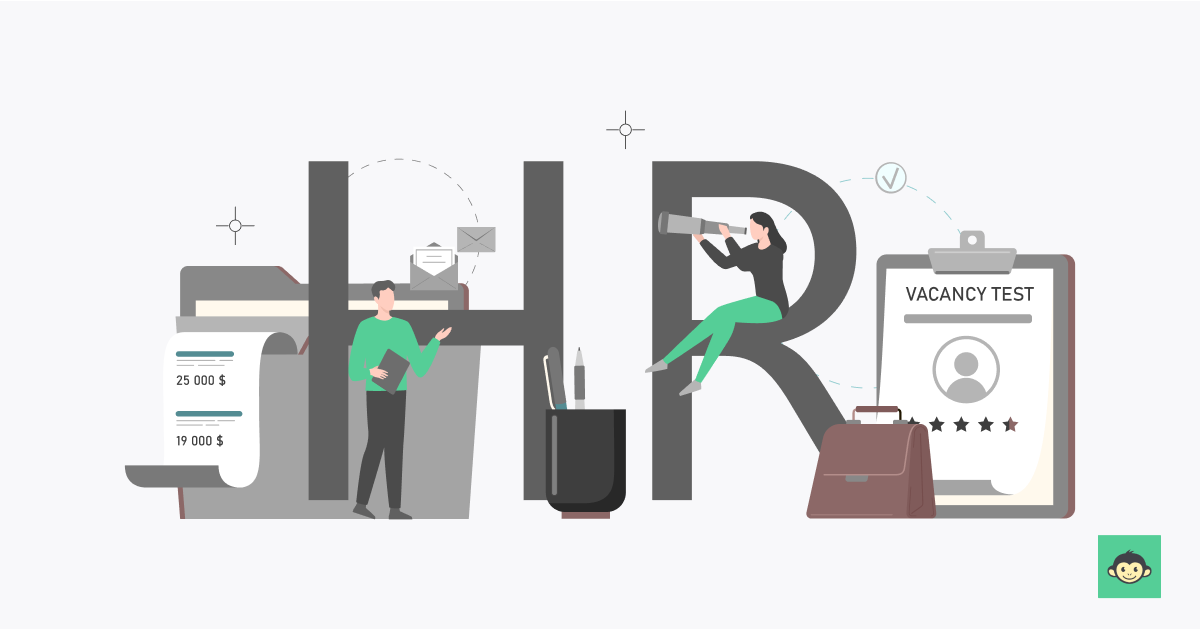How can increased HR innovation lead to improved employee retention and productivity in 2024

Think of HR innovation as the compass guiding organizations toward a future where traditional HR practices are reimagined and reshaped to meet the evolving needs of the workforce.
In this blog, we'll demystify the buzzwords, from AI-driven diversity and inclusion to employee experience platforms, shedding light on how these innovations can redefine the employee journey.
This isn't just about adopting the latest technology; it's about fostering a cultural shift that embraces creativity, agility, and a deep understanding of what motivates and engages employees.
HR innovation meaning

HR innovation refers to the proactive and strategic application of new ideas, technologies, processes, and methodologies within the field of Human Resources to enhance and optimize the overall employee experience, streamline HR operations, and align workforce management with broader organizational goals.
It goes beyond merely adopting technological tools; it involves a mindset shift that embraces creativity, agility, and a continuous quest for improvement in how the HR department functions.
In essence, HR innovation aims to break away from traditional, static HR practices and embrace a dynamic, forward-thinking approach.
This can involve leveraging cutting-edge technologies like artificial intelligence for talent acquisition, implementing employee experience platforms, adopting data-driven decision-making processes, using employee listening tools, and introducing novel strategies for talent development and retention.
The ultimate goal of HR innovation is to create a workplace environment that not only attracts and retains top talent but also nurtures employee engagement, satisfaction, and productivity.
By staying ahead of industry trends and proactively embracing change, organizations can position themselves as leaders in the evolving landscape of human resources, fostering a culture of innovation that resonates throughout the entire workforce.
How do you drive innovation in HR?

Driving innovation in HR involves a strategic and proactive approach that goes beyond simply implementing new technologies. Here are key strategies to foster innovation in Human Resources:
Embrace a culture of innovation
Cultivate a work environment that encourages creativity, risk-taking, and continuous improvement. Foster a culture where employees feel empowered to share ideas, experiment with new approaches, and learn from both successes and failures.
Stay informed on industry trends
Regularly monitor and adapt to emerging trends in HR technology, workforce management, and employee engagement. Attend industry conferences, participate in webinars, and engage with HR communities to stay ahead of the curve.
Invest in technology
Leverage cutting-edge HR technologies, such as artificial intelligence for recruitment, data analytics for workforce planning, and employee experience platforms. Choose tools that align with your organization's goals and enhance efficiency while providing a positive experience for employees.
Prioritize employee experience
Put employees at the center of HR innovation efforts. Understand their needs, expectations, and pain points throughout the employee lifecycle. Use feedback mechanisms, surveys, and qualitative data to continuously improve the overall employee experience.
Promote continuous learning
Encourage ongoing skill development and provide resources for employees to stay current with industry trends. This not only enhances individual capabilities but also contributes to a culture of learning and adaptability within the organization.
Collaborate across departments
Break down silos and encourage collaboration between the HR team and other departments. Cross-functional teams can bring diverse perspectives to problem-solving and lead to innovative solutions that address broader organizational challenges.
Experiment with new practices
Implement pilot programs or small-scale experiments to test new or existing HR practices before full-scale implementation. This allows for learning from real-world scenarios and adjusting strategies based on actual outcomes.
Data-driven decision-making
Harness the power of data analytics to inform HR decisions. Analyze workforce data to identify trends, predict future needs, and make informed decisions that drive organizational success.
Encourage leadership support
Obtain support from organizational leadership for HR innovation initiatives. Leadership buy-in is crucial for allocating critical resources, overcoming resistance to change, and ensuring that innovation is a strategic priority.
Celebrate and recognize innovations
Acknowledge and celebrate successful innovations within the HR function. Recognizing and rewarding innovative efforts to assist employees fosters a positive culture and motivates employees to contribute their creative ideas.
What are the three innovative approaches to HR?

Here are three innovative approaches that HR managers can adapt in their organizations to enhance their human resources practices:
1. Employee experience platforms (EXPs)
Employee Experience Platforms are comprehensive tools designed to improve the overall journey of employees within an organization. These platforms go beyond traditional HR systems, integrating various aspects of the employee experience, including onboarding, learning and development, performance management, and employee engagement.
EXPs leverage data analytics to provide insights into employee sentiment, allowing HR professionals to make data-driven decisions that positively impact the workplace.
2. Agile HR practices
Borrowing from the agile methodology commonly used in software development, Agile HR is an innovative approach that promotes flexibility, collaboration, and rapid adaptation within HR processes. This method involves breaking down traditional hierarchies, promoting cross-functional teams, and embracing iterative development.
Agile HR allows organizations to respond swiftly to changing business needs, fostering a more dynamic and responsive HR function. This approach is particularly beneficial in industries where rapid adaptation to market changes is essential.
3. Predictive analytics for talent management
Leveraging predictive analytics in HR involves using data and statistical algorithms to forecast future trends and behaviors within the workforce.
This approach enables HR professionals to make more informed decisions in areas such as talent acquisition, succession planning, and employee retention.
By analyzing historical data, organizations can identify patterns, predict future talent needs, and proactively address potential challenges. Predictive analytics helps HR leaders move from a reactive stance to a proactive one, aligning talent strategies with the organization's long-term goals.
10 HR innovation examples for the upcoming times

Here are 10 examples that can serve as a cornerstone for a successful HR innovation here at your organization.
- Virtual reality onboarding: Implement immersive virtual reality experiences for onboarding, allowing new hires to navigate through virtual office spaces, meet team members, and undergo training in a simulated environment. This enhances engagement and accelerates the onboarding process.
- AI-powered diversity and inclusion tools: Utilize artificial intelligence to analyze HR data, identify diversity gaps, and provide actionable insights. AI tools can help organizations create more inclusive workplaces by promoting diversity in hiring, talent development, and leadership positions.
- Blockchain for secure employee data: Leverage blockchain technology to enhance the security and transparency of employee data. This innovation ensures that sensitive HR information, such as payroll and performance records, is securely stored, accessible only to authorized personnel, and resistant to tampering.
- Chatbot-assisted HR services: Integrate chatbots into HR systems to provide instant and personalized support to employees. Chatbots and mobile apps can answer routine HR queries, assist with benefits enrollment, and streamline communication, freeing up HR professionals to focus on more complex tasks.
- Gamified learning platforms: Develop gamified learning solutions for employee training and development. Gamification adds an element of fun and competition, making learning more engaging and effective. Employees can earn rewards and recognition as they progress, enhancing knowledge retention and skill acquisition.
- People analytics for well-being: Utilize advanced people analytics to assess employee well-being. By using employee survey tools to analyze data on factors like workload, work hours, and stress levels, organizations can proactively address burnout, enhance mental health support, and create a healthier work environment.
- Robotic process automation (RPA) for HR repetitive tasks: Implement RPA to automate routine HR tasks such as data entry, payroll processing, and benefits administration. This allows HR professionals to focus on strategic initiatives, reduces errors, and increases overall operational efficiency.
- Personalized employee benefits platforms: Offer personalized benefits platforms that use AI to analyze individual employee preferences and needs. Tailored benefits packages, including wellness programs and flexible schedules, contribute to higher employee satisfaction, retention, and a healthier work-life balance.
- Microlearning modules: Develop bite-sized, mobile-friendly microlearning modules for continuous employee development. These short, focused lessons delivered through various channels empower employees to acquire new skills at their own pace, promoting a culture of continuous learning and adaptability.
- Predictive hiring analytics: Implement predictive analytics in recruitment processes to forecast candidate success. By analyzing historical hiring data, organizations can identify patterns and criteria that lead to high-performing hires, streamlining the talent acquisition process and improving the overall quality of hires.
Ways to encourage HR innovation in your organization

Fostering HR innovation within your organization requires a deliberate and supportive approach.
Firstly, cultivate a culture that champions creativity, promoting innovation and continuous improvement. Encourage open communication channels where employees feel empowered to share innovative ideas without fear of criticism. Embrace a mindset that values experimentation and acknowledges that not every initiative will yield immediate success.
Secondly, invest in ongoing education and development for senior management and HR professionals, ensuring they stay abreast of industry trends and emerging technologies. By providing opportunities for skill enhancement, employees can contribute fresh perspectives and adopt cutting-edge practices.
Thirdly, establish cross-functional collaboration, encouraging HR to work seamlessly with other departments. This approach facilitates the exchange of diverse insights, fostering a holistic approach to problem-solving and innovation.
Recognize and celebrate successful innovations, reinforcing a positive culture that values and rewards creative contributions. Ultimately, leadership endorsement of innovative culture is paramount—ensuring that HR innovation aligns with broader organizational goals and receives the necessary resources and support to thrive.
How do you implement human resources innovations within your organization?

These are the steps to implement human resources innovations within your organization.
- Assess current state: Evaluate existing HR processes and identify areas for improvement or innovation by gathering feedback from employees and assessing current technology usage.
- Set clear objectives: Define specific goals for HR innovation, aligning them with overall organizational objectives to ensure strategic alignment and measurable outcomes.
- Invest in technology: Choose and implement HR technologies that align with innovation goals, addressing pain points and enhancing efficiency in areas such as talent acquisition, performance management, and employee engagement.
- Promote a culture of innovation: Cultivate an environment that encourages creativity and risk-taking. Communicate the importance of innovation and reward employees for contributing innovative ideas.
- Provide training and development: Offer training programs to HR professionals on emerging trends and technologies. Ensure they have the skills needed to leverage innovative tools effectively.
- Encourage cross-functional collaboration: Facilitate collaboration between HR and other departments. Cross-functional teams bring diverse perspectives and foster innovation across the organization.
- Implement pilot programs: Roll out small-scale pilot programs to test innovative HR initiatives. Gather feedback, assess results, and make adjustments before full-scale implementation.
- Gather employee feedback: Solicit input from employees throughout the innovation process. Their perspectives can provide valuable insights into the effectiveness and impact of HR innovations on the workforce.
- Monitor and evaluate: Continuously monitor the performance of HR innovations. Use data and analytics to evaluate their impact on key HR metrics and adjust strategies accordingly.
- Leadership support and communication: Secure leadership buy-in for HR innovation initiatives. Communicate the value and benefits to leaders, ensuring ongoing support and resources for successful implementation.
How can innovation in HR help the organization succeed in employee engagement and establish a resilient workforce?
Innovation in HR is a powerful catalyst for fostering employee engagement and building a resilient workforce.
By embracing cutting-edge technologies and creative methodologies, organizations can redefine traditional HR practices, creating a workplace environment that resonates with employees and bolsters the business leaders' overall resilience.
Firstly, innovative HR practices enhance employee engagement by addressing individual needs and preferences. Advanced tools, such as employee experience platforms and personalized benefits platforms, provide tailored solutions that cater to diverse workforce requirements.
This level of customization not only boosts satisfaction but also demonstrates a commitment to employee well-being, fostering a sense of belonging and loyalty.
HR innovation also plays a pivotal role in cultivating a resilient workforce. Technologies like predictive analytics enable organizations to anticipate talent needs, identify potential skill gaps, and proactively engage employees to address challenges.
This forward-thinking approach allows for strategic workforce planning, ensuring the organization is equipped to navigate uncertainties and adapt to evolving market conditions.
Moreover, innovations such as gamified learning modules and microlearning opportunities contribute to continuous skill development, empowering employees to stay agile and resilient in the face of changing industry landscapes.
The adoption of agile HR practices further facilitates flexibility and responsiveness, enabling the organization to pivot quickly in response to unexpected disruptions.
In summary, HR innovation isn't just about staying current; it's a strategic imperative for organizations seeking to thrive in the modern business landscape.
By prioritizing employee engagement and resilience through innovative HR approaches, organizations can create a workplace that not only attracts top talent but also cultivates a workforce capable of overcoming challenges and driving sustained success.
Conclusion
HR innovation is the key factor to unlocking the full potential of employee engagement and building a resilient workforce.
As we've explored the transformative impact of progressive HR practices, the role of technology, and the significance of employee feedback, it's evident that staying ahead requires a commitment to innovation.
In this dynamic landscape, CultureMonkey emerges as the ideal ally for organizations aspiring to elevate their HR game. With its innovative approach to gathering and interpreting employee feedback, CultureMonkey empowers HR professionals to implement strategies that directly impact retention and productivity.
By utilizing its comprehensive suite of tools, organizations can not only foster a culture of innovation but also enhance employee satisfaction and loyalty.



